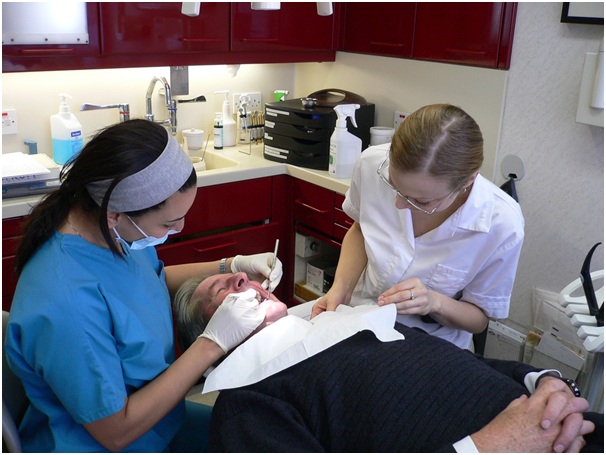Cosmetic dentistry procedures are becoming more popular in the UK following an ongoing trend in the US for the perfect smile that is not reserved just for rich celebrities. For all those with crooked, yellow, missing or gappy teeth, there are numerous cosmetic dentistry applications and procedures available for everyone.

What Is Cosmetic Dentistry?
Cosmetic dentistry aims to improve the appearance of the smile by altering the colour, shape, size, position or alignment of the natural teeth. Here are some of the most common cosmetic procedures available in the UK
Porcelain Veneers
These ultra-thin ceramic overlays are bonded on to the natural tooth and give an aesthetically natural look with light-reflective properties and stain resistance. They are an excellent, simple and relatively non-invasive choice to cover chipped or crooked teeth and can be provided by a dentist in Dublin.
Teeth Whitening
The American Dental Association reports that teeth whitening is the most commonly requested cosmetic dentistry procedure. Discoloured and stained teeth can be returned to a natural pearly white using one of three options: whitening toothpastes with special stain-removing and polishing chemicals to improve the whiteness of your teeth; home whitening kits, such as the Colgate® Max White Professional system offered by Docklands Dental; or an in-office bleaching carried out in the dental surgery using a combination of hydrogen peroxide bleaching and a specialist laser to enhance the whitening effect.
Dental Contouring
This procedure is perfect for those who have cracked, overlapping, crooked or chipped teeth and can be used to alter the position, length or shape of the tooth to match its neighbours. This is extremely popular and can be completed in just one session.
Dental Bridges
Unlike the old-fashioned removable false teeth that used to be common, fixed dental bridges are used to replace missing teeth. The false tooth is held in place by two permanent crowns on existing viable teeth, making it a permanent fixture in your mouth.
Orthodontics
This can be standard (one to two years) or accelerated (six to nine months) and usually requires surgical removal of some crowded teeth to create room to move and straighten the remaining teeth. Metal or tooth-coloured braces are fitted around the whole of the mouth to either pull or push the teeth into the correct alignment.